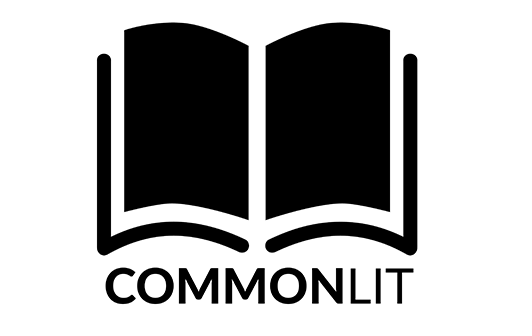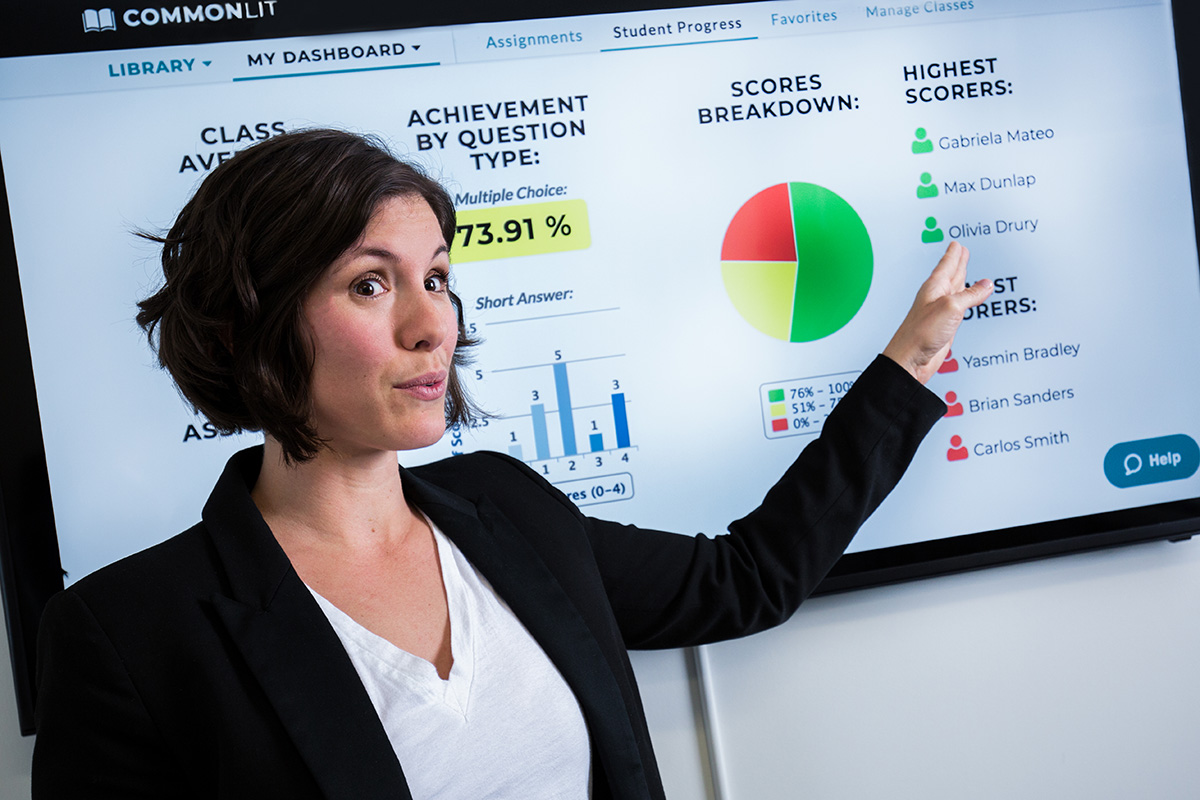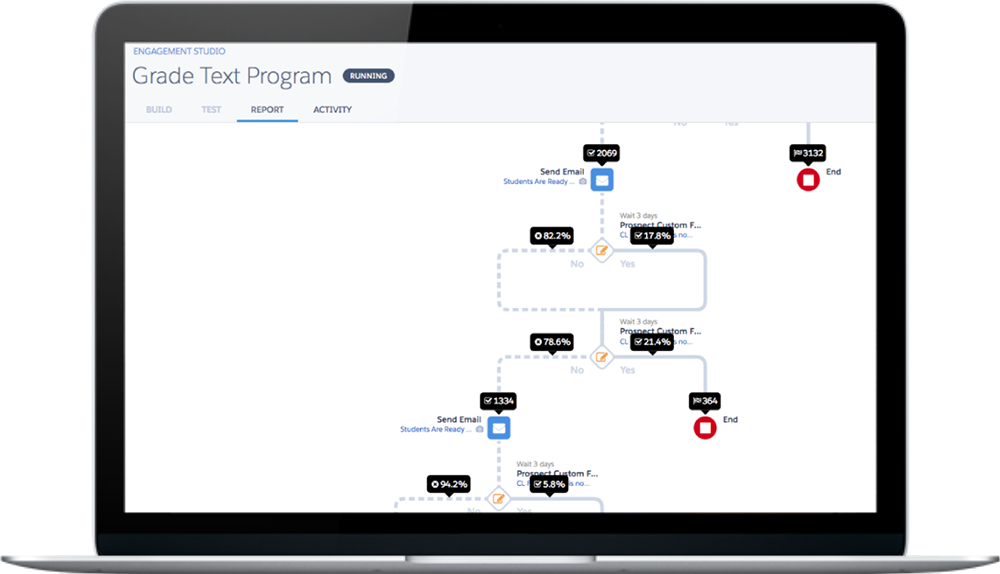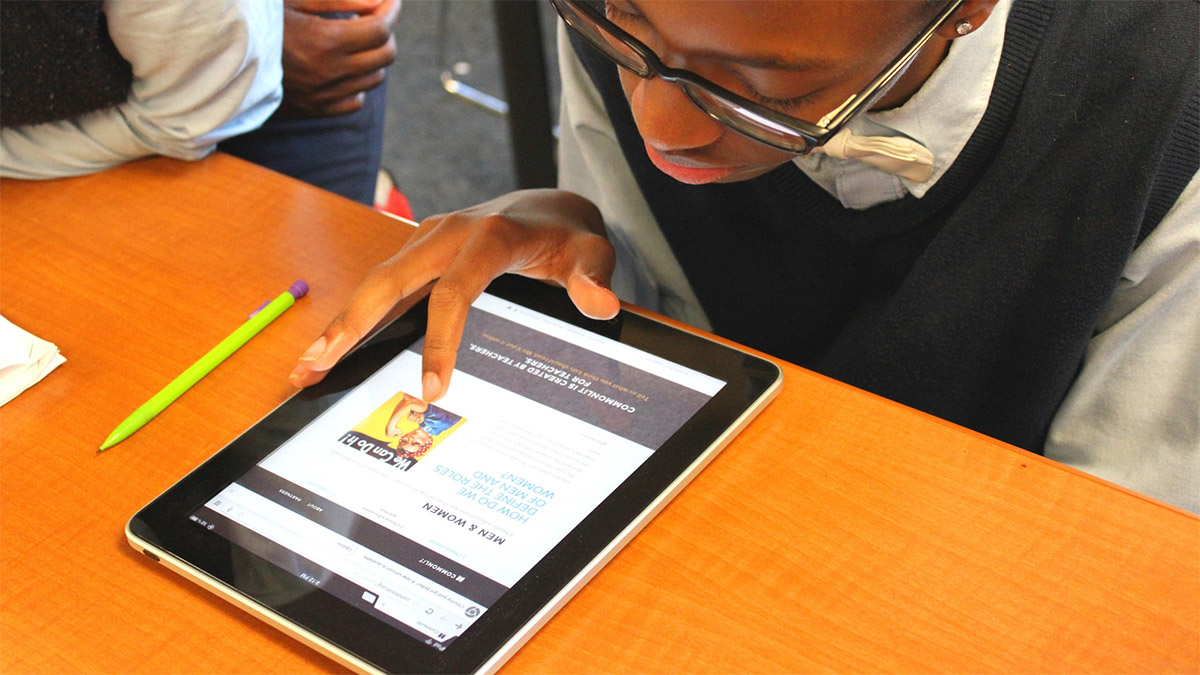
CommonLit

Small Nonprofit, Super-sized Reach and Program Engagement
Michelle Brown is on a mission to change the game for middle school students in low income schools. Spurred by her own experience teaching in an under resourced Mississippi classroom, and armed with the knowledge that 8th grade reading scores are one of the best predictors of lifetime earnings, she created CommonLit, a free online reading program that helps students develop the advanced reading and writing skills they need to secure a high wage job in a fast changing economy.
Today, CommonLit has a significant footprint in the US and across the world, with 4.9 million registered teachers and students in over 37,000 schools. Around 20,000 new users signing up every day. Indeed, their exponential growth rate meant that they hit their first 1 million users as fast as the social networking site Facebook did.

Teachers go to CommonLit’s website to choose a high-interest lesson, students receive innovative support through the platform, and teachers and school leaders receive a real-time dashboard of data to monitor progress and see which students need additional support. The program is rigorously backed by best practice research in literacy instruction, to ensure that students and teachers receive the highest quality support.
It wasn’t always this way. Five years ago, CommonLit started with a simple website of pdfs. But getting cutting-edge technology to the hardest to reach students has always been central to the nonprofit’s mission. So, in addition to using it to deliver services, Brown and her small team recognized that they could use technology to rapidly scale their work and ultimately increase their impact on student outcomes. Here’s how.
Powering programs through Pardot
Early on, it was clear that CommonLit was having a positive impact on student grades. In its first year of implementation, students using the program more frequently, did better on grade level reading assessments. Not satisfied with these results alone, Brown recalls thinking, “So what? How could we encourage better reading outcomes?”
Analyzing its data, CommonLit found that students did much better in writing over time when they received specific feedback on how they could improve their written work. In response, the team created a simple online tool where, with one click, teachers could give students a score and quickly provide targeted feedback. But, even with an easy to use feature, only around 15 percent of teachers were providing the kind of feedback that the nonprofit knew would be transformative.
CommonLit recognized that it needed to encourage more teachers to act but its capacity to do so felt limited by a small team. Salesforce’s Engagement Studio in Pardot was the tool the team needed to scale their efforts. Through it, they were able to power an email drip campaign to nudge teachers to use better instructional practices. Once a student had submitted their work, teachers received an automated nudge through the platform to remind them to provide a grade and personalized feedback. Today, the team is able to send thousands of emails every day, helping students and teachers on a personalized learning journey, without the need to add additional staff members.

More broadly, buoyed by its success in improving student outcomes, CommonLit wanted to find ways to segment, nurture and engage the thousands of users registering on its site every day. The team mapped out an ideal individualized pathway through the program for each of these users, that would lead to better outcomes in reading. They segmented their population and designed personalized intervention for users if they didn’t take action, using Engagement Studio to nudge and engage them.
For Brown, impact is key. She says, “we can look at the statistics captured in Pardot to measure the impact of these nudges on student reading growth over time. And we can take this impact metrics and communicate them to a broader external audience, like our donors and partners.”
Nurturing partners with the Nonprofit Success Pack
Alongside its success in the classroom, CommonLit was looking for ways to use technology to quickly and productively manage its complex school district, content creator, donor and partner relationships, all while maintaining a small team.
In particular, with just three people working on partnerships, the team needed to be strategic about reaching out to leads that would be most likely to yield positive results. Using NPSP and the Salesforce Inbox, CommonLit has been able to deftly manage hundreds of different relationships, with school district partners, donors and copyright partners. The team has been able to track constituents as they move through their journey with the organization and automate highly personalized emails to them.
Pathway to success using predictive analytics
Looking ahead, Brown has an even more audacious vision – to serve 20 million students by 2020. That’s around one half of all public school students in America. To achieve this, Brown says that the nonprofit is going to have to get much more advanced with its ability to analyze and report data, and is excited to deploy Salesforce Einstein in these efforts. With a dataset of over 37 million rows, CommonLit has a wealth of information to explore, and are even building a predictive model to reach out to the most strategic leads.

Brown says, “My vision is that we will be able to use predictive analytics to determine when a child is on a failure path in reading and use that data to alert parents, administrators and school leaders before it’s too late”.
Achieving this would be life-changing for millions of students in America and beyond.